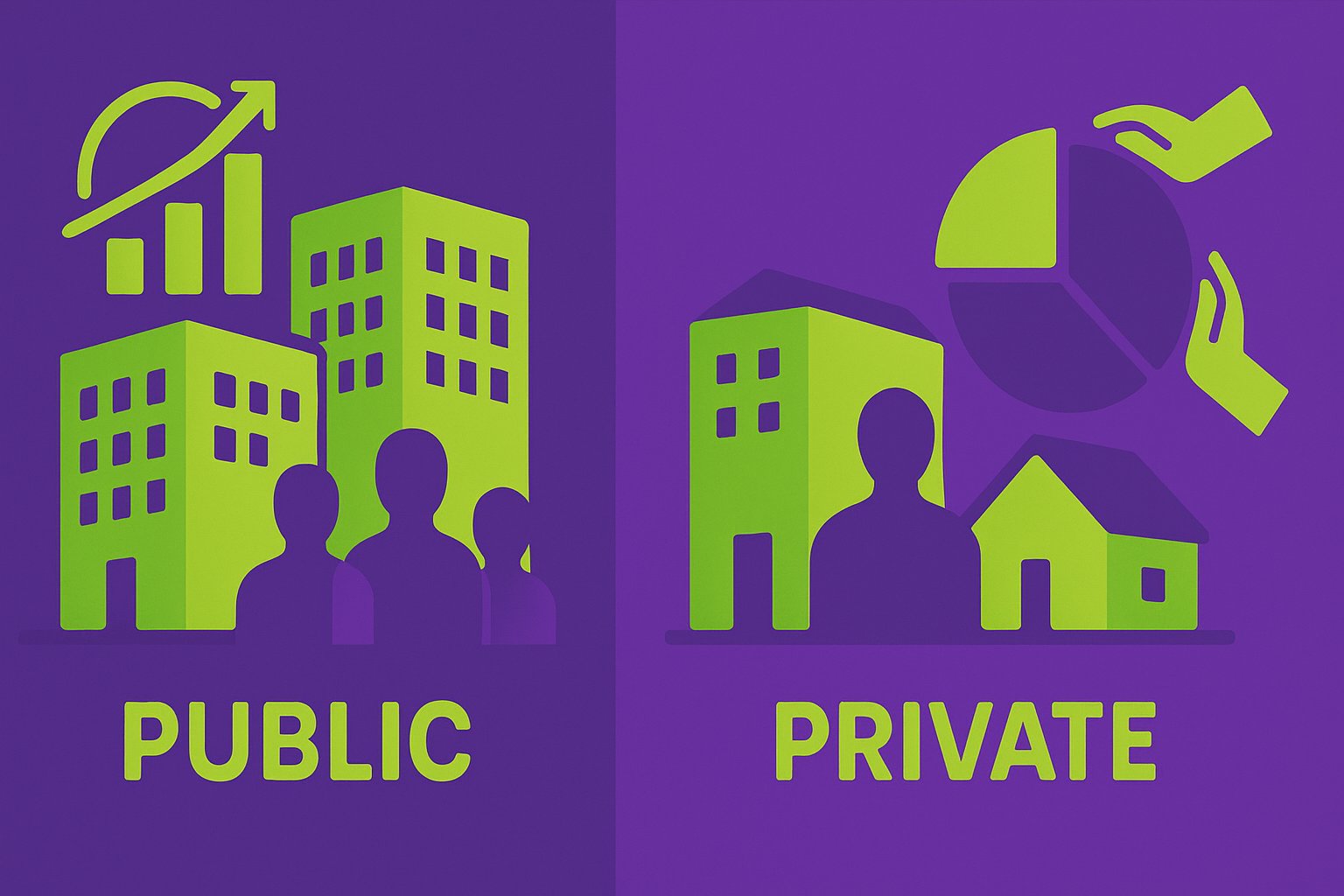The Evolution of Debt in Real Estate Crowdfunding
Real estate crowdfunding has revolutionized how everyday investors access commercial property deals, and debt instruments stand at the heart of many of these opportunities. Initially dominated by equity offerings, crowdfunding platforms soon recognized the appeal of lending structures—providing predictable income streams and lower volatility compared to pure equity plays. As platforms matured, they began layering debt into senior and junior tranches, offering investors a choice between high-security, lower-yield loans and higher-risk, higher-return slices. This evolution has broadened the appeal of real estate crowdfunding, allowing investors to tailor risk and return profiles more precisely within a single project’s capital stack.
Today, understanding how senior and junior debt function—and how they differ—is essential for any crowdfunding participant seeking balanced diversification. By dissecting the nuances of priority claims, interest rates, and project sponsorship dynamics, investors can craft portfolios that align with their income goals, risk tolerance, and holding period. This article dives deep into the mechanics, benefits, and caveats of senior versus junior debt in real estate crowdfunding structures, equipping you to make informed, strategic decisions.
What Makes Debt Senior? Exploring Priority and Protections
Senior debt sits at the top of the capital stack, meaning it has first claim on a project’s cash flows and collateral in the event of default. This seniority translates into enhanced credit enhancements—including stricter loan-to-value (LTV) requirements, shorter loan terms, and often covenants that restrict sponsor actions. Platforms typically market senior debt as the “safest” option, appealing to risk-averse investors who prioritize principal preservation and regular interest payments over capital appreciation.
Because of its preferred position, senior debt generally carries lower interest rates compared to junior debt. However, this lower yield is the trade-off for the added security. Investors in senior loans benefit from cash flow sweeps—mechanisms that redirect surplus project revenue to repay debt more quickly—and first-lien positions that allow lenders to foreclose if obligations aren’t met. For investors seeking stability and a more bond-like experience within real estate crowdfunding, senior debt provides an attractive middle ground between equity’s upside potential and conventional fixed-income instruments.
Diving into Junior Debt: Embracing Higher Yield Potential
Junior debt, sometimes called mezzanine debt in real estate, occupies a subordinate position beneath senior lenders in the capital structure. While it still enjoys fixed interest payments, junior debt is exposed to more risk: in default scenarios, senior debt holders are paid first, leaving junior lenders to absorb losses or recover whatever collateral remains. This heightened risk is compensated by elevated interest rates, performance fees, or equity kickers—structures that boost total returns if the project exceeds certain performance benchmarks.
The typical profile of a junior debt investment appeals to those willing to trade security for yield. Projects utilizing junior tranches often target value-add or opportunistic developments where sponsors believe upside exists through renovations, repositioning, or market appreciation. Because junior debt bridges the gap between senior financing and sponsor equity, it can unlock additional capital for more ambitious projects—but not without demanding rigorous due diligence around sponsor track records, exit strategies, and market fundamentals.
Comparing Returns: Senior vs. Junior Debt Yields
When evaluating crowdfunding debt offerings, the most visible difference lies in target yields. Senior debt deals might advertise 6% to 8% annual interest, reflecting the lower risk profile. Junior debt can range from 10% to 15% or higher, thanks to its subordinate claim and potential equity participation. However, headline yields don’t tell the entire story: investors must also consider payment frequency, default provisions, and whether interest accrual continues in distress scenarios.
It’s useful to view senior and junior debt yields as complementary components of a diversified income strategy. Senior tranches deliver steady, predictable cash flows, cushioning portfolio volatility. Junior tranches, meanwhile, enhance overall portfolio return, albeit with greater variability. Investors who blend these debt tiers across multiple deals can smooth out income streams while capturing extra spread when higher-risk assets perform as expected.
Risk Management: Navigating Defaults and Downturns
No investment is risk-free, and debt instruments are no exception. Senior debt’s enhanced protections—first-lien security, restrictive covenants, and conservative LTV ratios—help mitigate downside scenarios, but they can still be impacted by systemic downturns or sponsor missteps. In contrast, junior debt faces greater vulnerability to market fluctuations; a prolonged decline in property values can erode collateral cushion and delay or reduce repayments.
Effective risk management hinges on portfolio diversification—across asset types, geographies, and debt tiers—and on scrutinizing sponsor quality. Look for platforms that provide rigorous underwriting documentation, stress-test analyses, and transparent default histories. Additionally, pay attention to structural safeguards like cash reserves, debt service coverage ratios (DSCR), and the presence of true-up mechanisms that protect lenders if interest payments lag.
Structuring Your Investment: Allocating Across the Capital Stack
Determining the right mix of senior and junior debt requires aligning your personal goals with each tranche’s characteristics. Conservative investors might allocate 80% of their debt budget to senior loans and 20% to junior, prioritizing preservation while capturing modest yield enhancement. Aggressive income seekers, by contrast, could tilt 50/50 or even overweight junior debt, accepting illiquidity and volatility for the potential of outsized returns.
Many platforms now offer debt funds or model portfolios that automate this diversification, spreading exposure across dozens of senior and junior deals. Such products can simplify decision-making and reduce deal-by-deal risk, though they often charge an additional management fee. For hands-on investors, assembling a custom debt portfolio allows more granular control over risk exposures, deal structures, and sponsor selection.
Legal and Regulatory Insights for Crowdfunded Debt
Real estate crowdfunding debt offerings are governed by securities regulations—primarily Regulation D and Regulation A+—as well as lending-specific statutes that dictate disclosure and investor eligibility. Senior debt generally falls under “exempt securities” when sold to accredited investors, whereas platforms may use Regulation A+ to open deals to non-accredited participants under certain circumstances. Junior debt offerings follow similar rules but often include more complex legal agreements, reflecting the subordinated claim and potential equity features.
As an investor, you should review offering memoranda, subscription agreements, and loan documents with a critical eye. Key legal considerations include default triggers, cure periods, cross-default clauses, and the process for enforcement. Engaging a securities attorney or a knowledgeable advisor can help you navigate these complexities, ensuring that the terms align with your expectations and risk profile.
Key Metrics to Evaluate Debt Opportunities
Whether senior or junior, robust underwriting hinges on clear performance indicators. Debt Service Coverage Ratio (DSCR) measures a project’s operating income against debt obligations, providing insight into repayment capacity. Loan-to-Value (LTV) ratios quantify collateral cushion, revealing how much property value can decline before lender recovery is jeopardized. For junior debt, additional metrics—such as the equity multiple and internal rate of return (IRR) targets—gauge total return prospects.
Platforms should supply detailed pro forma projections, sensitivity analyses under stress scenarios, and third-party valuation reports. By comparing these metrics across deals and debt tiers, investors can identify structures that balance safety and return according to their unique portfolio objectives.
Aligning Debt Investments with Your Portfolio Goals
Debt investments occupy a distinct niche between cash equivalents and equity holdings, offering predictable income with varying degrees of risk. Senior debt can serve as the foundation of an income-focused allocation, complementing bonds and dividend-paying stocks. Junior debt may be best suited for satellite positions, boosting yield in exchange for incremental risk and reduced liquidity.
Defining clear objectives—whether preserving capital, generating steady cash flow, or chasing higher returns—will guide whether you lean toward senior or junior tranches. Periodic portfolio reviews, coupled with active monitoring of project updates and market conditions, will help you rebalance exposures and seize new opportunities as they arise.
The Future of Debt Structures in Real Estate Crowdfunding
As crowdfunding platforms innovate, we’re seeing novel debt structures emerge: floating-rate loans tied to benchmark indices, hybrid debt-equity instruments with dynamic return profiles, and fully tokenized securitizations that trade on secondary markets. These advances promise greater flexibility and liquidity, potentially narrowing the spread between senior and junior yields.
For investors, staying informed about regulatory shifts, platform track records, and emerging fintech solutions will be crucial. By mastering the fundamentals of senior and junior debt today—and adapting to tomorrow’s innovations—you position yourself at the forefront of a financing revolution that democratizes real estate investment.
Navigating the layers of debt in real estate crowdfunding demands a nuanced understanding of priority claims, yield mechanics, and risk management strategies. Whether you gravitate toward the security of senior debt or the higher returns of junior tranches, a disciplined approach and thorough due diligence will unlock new avenues for portfolio growth. Embrace both the stability and the upside potential embedded in these debt structures, and craft an income-focused strategy that thrives in any market climate.




